Title of the work
Country of the First Edition
Country/countries of popularity
Original Language
First Edition Date
First Edition Details
Jean-Luc Langlais, Ulysse d’après l’œuvre d’Homère. Lyon: Éditions Amaterra, 2016, 48 pp.
ISBN
Official Website
The book’s page on the website of the Éditions Amaterra (accessed: December 17, 2021).
Available Onllne
The free demo version of the book is available on the website of the Éditions Amaterra (accessed: December 17, 2021).
Genre
Adaptation of classical texts*
Adaptations
Illustrated works
Short stories
Target Audience
Children (6–12 years)
Cover
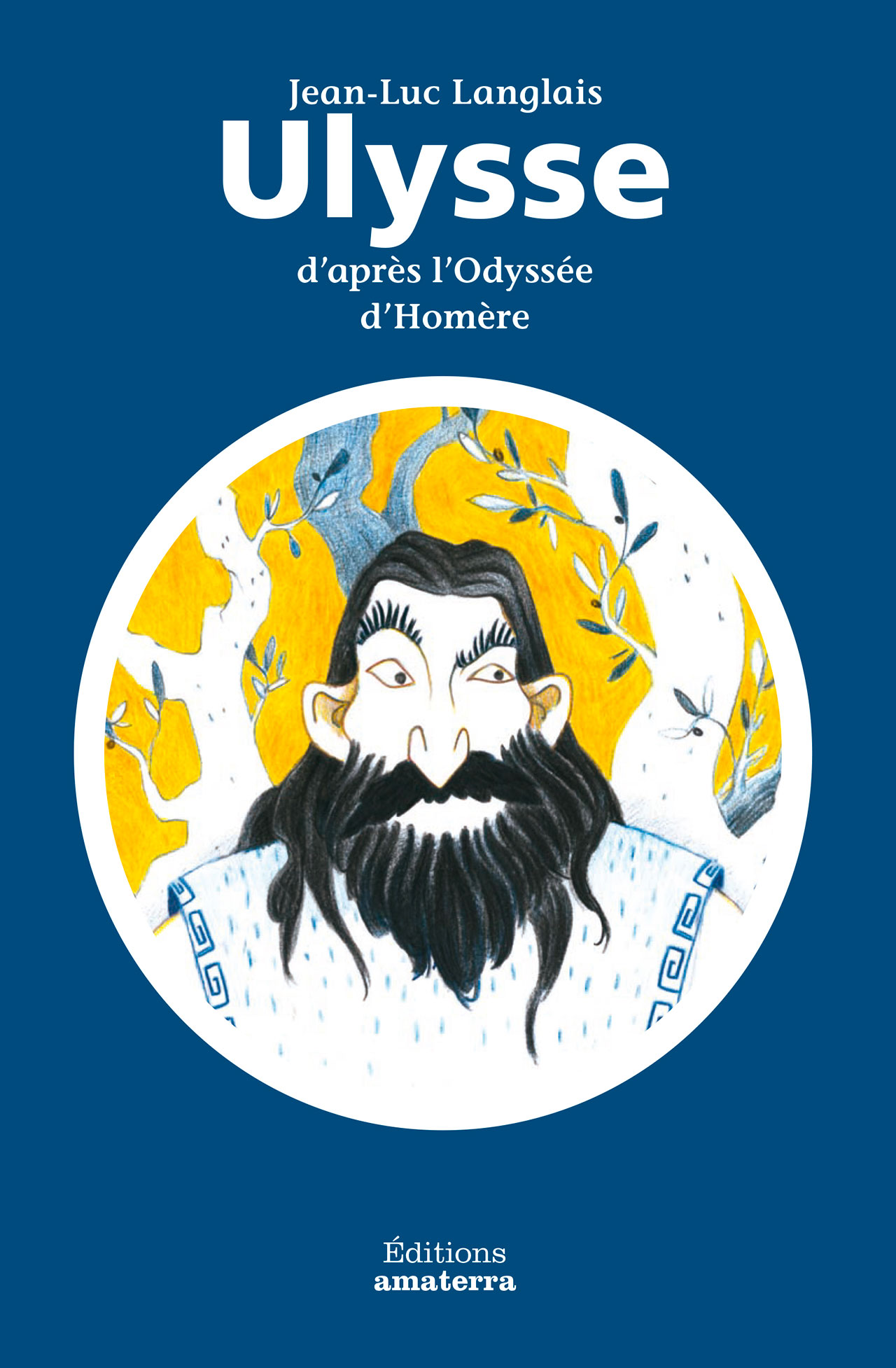
Courtesy of the Publisher.
Author of the Entry:
Angelina Gerus, University of Warsaw, angelina.gerus@gmail.com
Peer-reviewer of the Entry:
Katarzyna Marciniak, University of Warsaw, kamar@al.uw.edu.pl
Elżbieta Olechowska, University of Warsaw, elzbieta.olechowska@gmail.com

Nicola Bernardelli
, b. 19..
(Illustrator)
Born in Verona, Italy, Bernardelli attended Émile Cohl School in Lyon, France. Since his graduation in 2015, Bernardelli has been working as a freelance illustrator of books for children, documentary comics, and scholastics books. His artwork can be found in the Italian children’s book I bambini inchiodati by Enrico Bante [Nailed Down Children], 2013; in French publications: Ulysse: d’après l’Odyssée d’Homère by Jean-Luc Langlais [Ulysses according to Homer], 2016; Le grand loup noir by Bernard Chouvier [Big black Wolf], 2016; Les trois frères et le dragon by Bernard Chouvier [Three Brothers and a Dragon], 2016; as well as in English, To the Island by Patricia Forde (2020).
On his website, Nicola Bernardelli says: "On the one hand, I’m interested in nature, and in observing and to reinterpreting it in my drawings in a decorative way. On the other hand, I’m interested in mythology and tales, in which I like to recognize timeless human aspects. This helps me to better understand myself and the others" (quoted from artstation.com, accessed: May 23, 2020).
Sources:
worldcat.org (accessed: December 17, 2021).
behance.net (accessed: December 6, 2021).
artstation.com (accessed: December 6, 2021).
bernardelli.jimdofree.com (accessed: May 23, 2020).
Bio prepared by Angelina Gerus, University of Warsaw, angelina.gerus@gmail.com

Jean-Luc Langlais
, b. 1951
(Author)
Jean-Luc Langlais teaches philosophy and works on the organization of various artistic projects (related mainly to puppetry, theatre and contemporary dance) in Essonne, France. His first literary work, a novel, Rubriques & briques rouges, was published in 2009. Then the author turned to writing children’s books. Among his works, there are such publications as Gargantua d’après “Gargantua” de François Rabelais [Gargantua according to Gargantua of François Rabelais], 2015; Ulysse d’après l’œuvre d’Homère [Ulysses according to Homer], 2016; and Alexandre le conquérant [Alexander the Conqueror], 2021.
Sources:
worldcat.org (accessed: December 17, 2021).
amazon.fr (accessed: December 17, 2021).
amaterra.fr (accessed: December 17, 2021).
Bio prepared by Angelina Gerus, University of Warsaw, angelina.gerus@gmail.com
Summary
This book may provide the first approach to The Odyssey of Homer. The classical text, simply and entertainingly retold, is supported by illustrations that vividly depict various ancient characters, particularly ancient monsters. Although the story is written in prose and utterly devoid of Homer’s poetics or certain secondary storylines, it retells the plot close to the original text. The simplicity of the narration, fidelity to the Greek source and colorful illustrations should attract young readers to the Odyssey and encourage them to engage with this text in the future.
Analysis
The format of The Odyssey is significantly changed, as the poetic features of the Ancient Greek epic are absent in the short story. The prose narrative lacks the hexameter and the whole wealth of Homer’s stylistic devices (comparisons, epithets, poetic retardation, etc.). The renunciation of the traditional epic form also affects the structure: for example, there is no invocation to the Muse in the children’s book.
The content is slightly simplified. Some storylines, and the minor characters connected to them, are eliminated; for instance, the encounter of Ulysses with Nausicaa, the crew landing on the island of the Lotophagoi (Lotus-eaters), Ulysses’ katabasis or Penelope weaving the burial robe for Laertes. There is no division between a human and divine dimension in this children’s book, typical of Homer’s text. This time, the story ends with Ulysses reverting to his true appearance and joyfully embracing his wife instead of Athena discouraging armed avengers of the death of Penelope’s suitors.
In the adaptation, the focus is not so much on the journey as on the figure of the hero. He is as subtle and courageous as in Homer’s epic. However, if the ancient character aspires to return to his native island, to his kingdom, to his people, in the children’s book, Ulysses seeks instead to reunite with his wife and son. Therefore, the motifs of fatherland, nation, or state government, so important for Homer, yield to the theme of family and relations between its members in the modern text. As a king and warrior, Ulysses is here primarily a loving husband and father.
Since the children’s book tells the story of Ulysses, the other significant characters (like Penelope and Telemachus) are presented with no more detail than the monsters, which the hero defeats or eludes on his way. Hence, for instance, the young readers learn about Telemachus’ trip to Nestor and Menelaus only briefly and post factum.
At the same time, the text provides several explicit references to Homer. Besides the fact that the poet is named in the title, Ulysse d’après l’œuvre d’Homère (Ulysses according to Homer’s epic), the last page (p. 48) provides brief information about his alleged personality and creative work.
As a result, while closely adhering to the original text of Homer, this children’s book considerably simplifies not only its form but also the content. The publication serves as a useful primer, easy to read and entertaining. It encourages children to learn more about the Greek text and introduces them to the famous story, which has become a universal cultural code.
The visual component of the book also deserves attention, as its stylization extends to all the details of illustrations, from meander ornaments to painted ships and household items (cf. Addenda). The gods are portrayed in a recognizable way and on a large scale, as in Homer’s text: Poseidon is a giant wave, and Athena wears a helmet, an owl sits on her shoulder. In addition, the monsters are represented not as repellent creatures but according to their mythological description: Polyphemus the Cyclops, Scylla with six grisly heads on long necks, Charybdis as a giant whirlpool or a siren, half bird and half woman.
Further Reading
Fowler, Robert Louis, ed., The Cambridge Companion to Homer, Cambridge: Cambridge University Press, 2004.
Homer, Odyssey, Volume I: Books 1–12, trans. Augustus Taber Murray, Loeb Classical Library 104, Cambridge: Harvard University Press, 1919.
Homer, Odyssey, Volume II: Books 13–24, trans. Augustus Taber Murray, Loeb Classical Library 105, Cambridge: Harvard University Press, 1919.
Wlodarczyk, Isabelle, Pénélope d’après L’Odyssée d’Homère, (Les grands textes à hauteur d’enfant), Paris: Éditions Amaterra, 2015, 48 pp.
Addenda
The story of Ulysses retold by Jean-Luc Langlais belongs to the collection Les grands textes à hauteur d’enfant (The great texts from a child’s perspective), launched by the Lyon-based publishing house Édition Amaterra. Other publications discuss not only works by significant authors, but also famous characters from mythology, literature and history, such as Penelope, Orpheus, Electra, Theseus, Cleopatra, or Alexander the Great. (All links accessed: December 17, 2021).
The book's demo from the publisher's website (accessed: January 18, 2022):
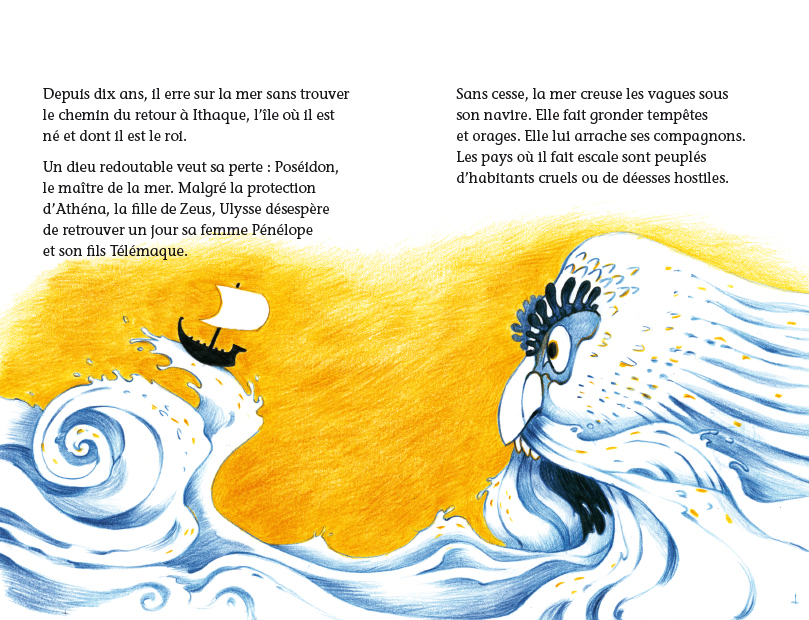
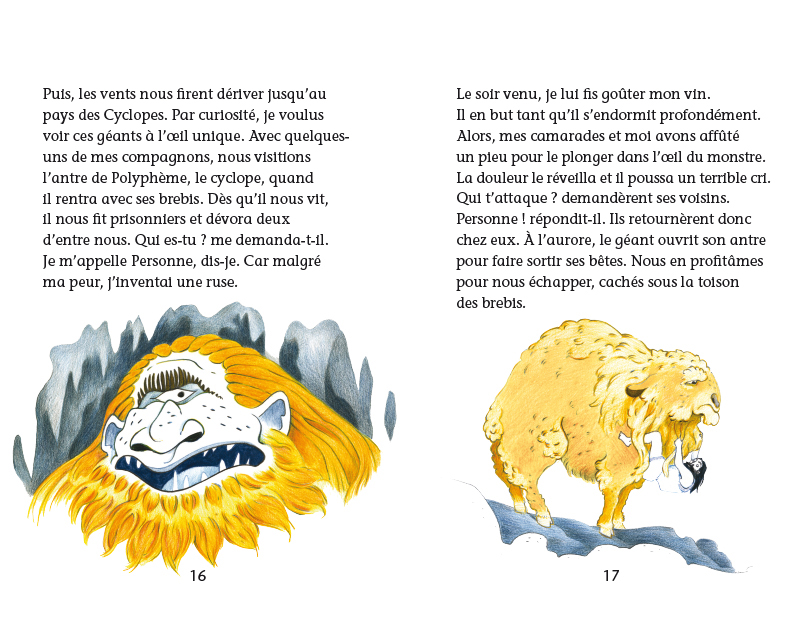
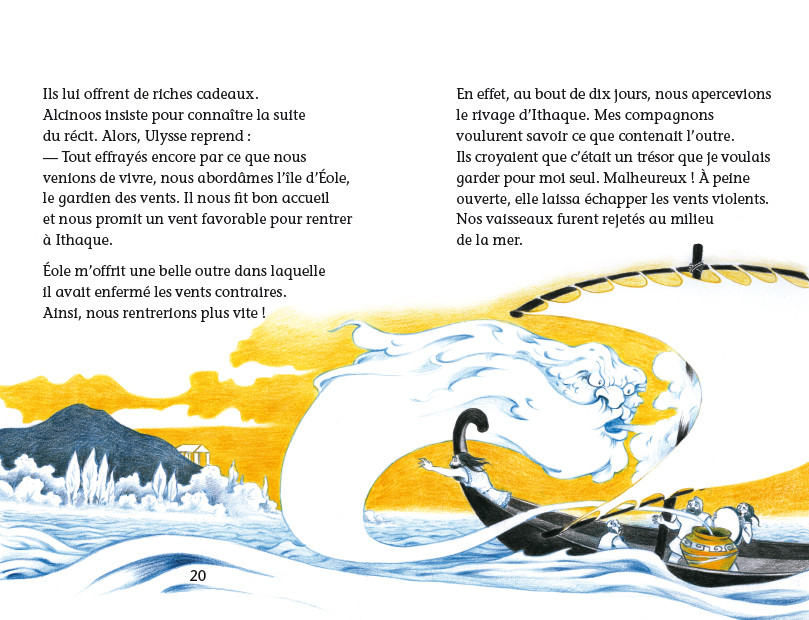
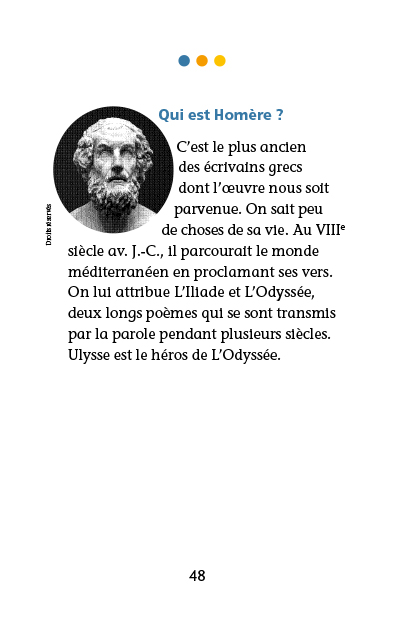
Courtesy of Éditions Amaterra.


